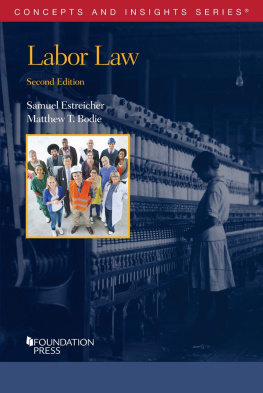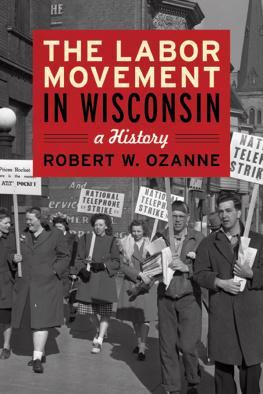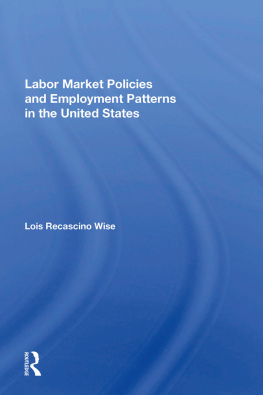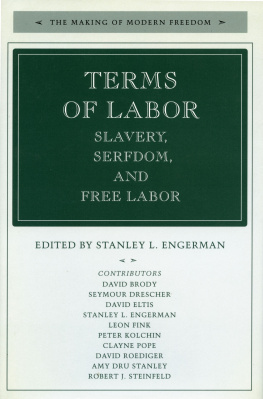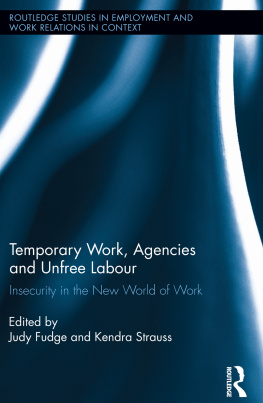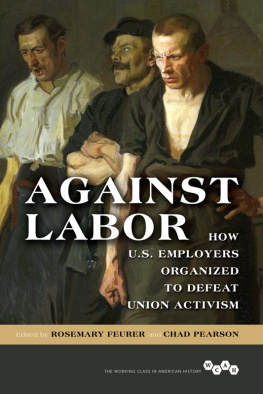Editorial Board
Saul Levmore
Directing Editor
William B. Graham Distinguished Service Professor of Law and
Former Dean of the Law School
University of Chicago
Daniel A. Farber
Sho Sato Professor of Law
University of California at Berkeley
Heather K. Gerken
Dean and the Sol & Lillian Goldman Professor of Law
Yale University
Samuel Issacharoff
Bonnie and Richard Reiss Professor of Constitutional Law
New York University
Harold Hongju Koh
Sterling Professor of International Law and
Former Dean of the Law School
Yale University
Thomas W. Merrill
Charles Evans Hughes Professor of Law
Columbia University
Robert L. Rabin
Calder Mackay Professor of Law
Stanford University
Hillary A. Sale
Professor of Law and Affiliated Faculty
McDonough School of Business, Georgetown University
Labor Law
Second Edition
Samuel Estreicher
Dwight D. Opperman Professor of Law & Director,
Center for Labor and Employment Law
New York University School of Law
Matthew T. Bodie
Callis Family Professor
Saint Louis University School of Law
CONCEPTS AND INSIGHTS SERIES

The publisher is not engaged in rendering legal or other professional advice, and this publication is not a substitute for the advice of an attorney. If you require legal or other expert advice, you should seek the services of a competent attorney or other professional.
Concepts and Insights Series is a trademark registered in the U.S. Patent and Trademark Office.
2016 LEG, Inc. d/b/a West Academic
2020 LEG, Inc. d/b/a West Academic
444 Cedar Street, Suite 700
St. Paul, MN 55101
1-877-888-1330
Printed in the United States of America
ISBN: 978-1-64242-691-5
For Aleta, my little wing, to whom I owe everything
S.E.
To Don Zavelo, Leah Jaffe & Dan Silverman, for teaching me how to be a labor lawyer
M.T.B.
Summary of Contents
A. NLRA Jurisdictional Limits and the Definition of
Employer
Regulation of the Employee-Bargaining
Agent Relationship
A. The Relationship Between Union Representation and
Union Membership
: Claims Dependent on or
Requiring Interpretation of a CBA
Table of Contents
b. Selection of Exclusive Bargaining
Representative
e. Individual Rights Within the Collective
Agreement
f. Relationship Between Represented Employee
and Union Bargaining Agent
and Reexamination of
the Antitrust Laws: Government Neutrality in Labor Disputes
The National Labor Relations Board:
Structure and Process
ULP Proceedings HypotheticalSarah Smiths
Charge Against Big Bath & Beauty Stores, Inc.
A. NLRA Jurisdictional Limits and the Definition of
Employer
E. Regulation of Campaign Propaganda and Other
Conduct
Impact on Employer Communications with
Employees
Decisions Concerning the Basic Scope or Direction of
the Business
Enforcing the Collective Bargaining
Agreement
Regulation of the Employee-Bargaining
Agent Relationship
A. The Relationship Between Union Representation and
Union Membership
: Activity That Congress Intended
to Leave Unregulated
: Claims Dependent on or
Requiring Interpretation of a CBA
Labor Law
Second Edition
Chapter 1
Labor law regulates collective action by workers concerning wages, hours, and working conditions and employer countermeasures in such disputes. It is a legal regime that deals with the economic and legal relationships between sellers of labor, acting as a collectivity, and actual or prospective purchasers of labor. Many times, employees will have chosen a labor organizationa unionto represent them collectively. But all employees have rights under labor law to engage in collective action for mutual gain, whether or not they are represented byor even have any interest in joininga union.
Labor law is one of three primary areas of workplace law, the others being employment discrimination law and employment law. Employment discrimination law concerns the legal prohibition of employment decisions based on an individuals race, sex, age, religion, national origin, disability and other status characteristics usually bearing no relationship to legitimate employer considerations. Employment law covers the rights and obligations of individual employees as to minimum wage, overtime, health and safety, and a myriad other specific mandates, without regard to whether or not they are represented by labor unions. Labor law, by contrast, is about collective action.
Our federal system of labor law is based primarily on the National Labor Relations Act of 1935 (NLRA). The NLRA was the first major federal intervention in employment relationship other than on the railroads. It is a foundational law that has shaped both federal and state legislation and decisions dealing with the workplace. And it has had staying power, too. Employees seeking union representation follow the same basic procedures that employees did during the late 1930s.
To understand the workings of American labor law, it helps first to understand the basic economic principles regarding both markets in general and labor markets in particular.
- A. The Economics of Labor Markets
1.Labor Markets vs. Commodities Markets
Economists have long posited that in competitive markets where there are many buyers, many sellers, and few barriers to new entry, prices are set by the interplay of supply and demand forces. For any particular good or service, those who can supply that item for sale will increase their efforts as the price goes up. In contrast, those who would buy that item will become less interested in the purchase as the price rises. At the intersection of these supply and demand forces, the market is said to be in equilibrium or to clear: no purchaser has an incentive to pay more than the market-clearing price and no seller has an incentive to accept less than that price. If there are changes in supplysay, the location of new oil wells with respect to the price of crude oilor changes in demandsay, a recession in the economy requiring less need for oilprices will change until a new equilibrium is reached.
The labor market, at its core, would seem to operate on the same basic principles. All other things being equal, providers of labor will move into a particular labor market as wages for their services increase, while employers will decrease their demand for workers as wages rise. Here, too, an equilibrium wage is reached, where no additional job seeker will work for less and no employer is willing to pay more. Again, changes in supplysay, an influx of immigrant workersor changes in demandsay, a boost in defense productioncan change prices until a new equilibrium wage is reached.
However, labor markets operate somewhat differently than the markets for commodities in a number of respects. First, labor is relatively immobile. Workers are often rooted in their communities and not able readily to uproot their families in pursuit of higher wages or better working conditions. Employers often set wages and benefits above the market-clearing level to attract better qualified, more responsible workers. These firms will also tend to key wage and benefit improvements to continued service in order to reduce turnover and encourage incumbent employees to train new hires. Both of these factors make it difficult for employees to quit their current jobs and, in that sense, enhance employer leverage over terms and conditions.

